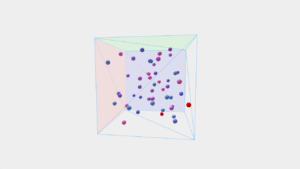Mean Free Path Physics Simulation
Interactive visualization of molecular collisions and kinetic theory
Real-Time Statistics
Mean Free Path
0
px
Time Between Collisions
0
frames
Collisions per Second
0
collisions
Key Physics Formulas
Mean Free Path:
λ = 1/(√2 × π × d² × n)
Time Between Collisions:
τ = λ / ⟨v⟩
Understanding Mean Free Path Physics
This interactive simulation demonstrates the fundamental concepts of mean free path physics in gas molecules. The mean free path represents the average distance a molecule travels between successive collisions with other molecules.
What is Mean Free Path?
In kinetic theory, the mean free path (λ) is a crucial parameter that describes molecular motion in gases. It depends on three main factors:
- Molecular diameter (d): Larger molecules have shorter mean free paths due to increased collision probability
- Number density (n): Higher density means more molecules and shorter paths between collisions
- Temperature: Affects molecular speed and collision frequency
How This Simulation Works
The red highlighted molecule shows its path between collisions. Each straight line segment represents one mean free path. Adjust the controls to see how different parameters affect collision dynamics:
- Increase molecule count: Shorter mean free path due to higher density
- Increase molecule size: More collisions and shorter paths
- Change speed: Affects collision frequency but not mean free path
Real-World Applications
Understanding mean free path physics is essential for:
- Gas dynamics and pressure calculations
- Vacuum technology and semiconductor manufacturing
- Atmospheric science and air quality modeling
- Chemical reaction kinetics

